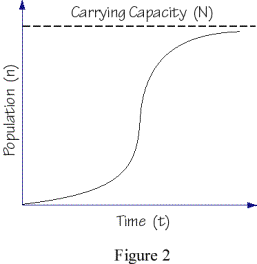Chapter 16: Reading Guide Name _____________________________
1. The Individuals of a Species Live in ___________________________________
Define population: ___________________________________________________
___________________________________________________________________
2. What limits the growth of a population? ___________________________________
3. What is demography? ________________________________________________
_____________________________________________________________________
4. List the three key features of populations.
______________________________________________________________________
______________________________________________________________________
______________________________________________________________________
5. What problems does inbreeding cause?
______________________________________________________________________
6. Why are cheetahs in danger? _________________________________________
7. Define population density: ______________________________________________
8. Illustrate the three main patterns of dispersion below:
|
|
9. Scientists Use Models to Explain ______________________________________
10. How often is the US census taken? __________________
11. When more individuals are born than die, what happens? _____________________
12. A J shaped population curve is called an __________________________________
13. Label the Growth curve (figure 2)

14. Define Carrying Capacity
15. What is a density-dependent factor?
Give an example
16. When the birth rate equals the death rate, what happens to the population?
_____________________________________________________________________
17. Using the population growth model (figure 16-6) calculate the rate of growth for each of the following scenarios.
|
Population |
Birth Rate |
Death Rate |
Rate of growth (r) |
|
Mudpuppies |
60/year |
80/year |
|
|
Grasshoppers |
15000/month |
10,000/month |
|
|
Cats |
550/year |
50/year |
|
|
Crows |
300/year |
310/year |
Which population is most likely to become extinct? _______________________
Which population is the most stable? ________________________
Which population is growing the fastest? __________________________
18. Real Populations Exhibit a Range of ____________________________
19. Give an example of a density-independent factor: __________________________
20. Answer true or false to the following statements regarding R and K strategists.
_____ r-strategists have long lifspans.
_____ r-strategists have many offspring.
_____ r-strategists grow exponentially when environmental conditions are good.
_____ k-strategists have many offspring.
_____ k-strategists provide intensive care for their young.
_____ k-strategists have short life spans.
21. Give an example of a k-strategist __________________________
Give an example of an r-strategist _________________________
22. Complete the table below by indicating whether the animal is an R or K strategist based on the other information.
|
Animal |
Lifespan |
Number of offspring |
Strategy (r or k) |
|
Mayfly |
3 days |
100-200 |
|
|
Dog |
11-15 yrs |
4-10 per litter |
|
|
Human |
65-90 yrs |
2-4 |
23. Health Watch: Population Pyramids. What is a population pyramid?
_____________________________________________________________________
24. In 1998, which age group had more females than males? _________________
25. Why will the need for geriatric (old-age) care increase in the years to come?
_____________________________________________________________________